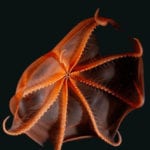 Mysteries
Mysteries  Mysteries
Mysteries  History
History 10 Surprising Stories About the Texas Rangers
 Humans
Humans 10 Philosophers Who Were Driven Mad by Their Own Theories
 Miscellaneous
Miscellaneous 10 Video-Game-Worthy Weapons and Armors from History
 Weird Stuff
Weird Stuff 10 Psychics Who Accurately Predicted Wartime Events
 The Arts
The Arts 10 Pieces of Art Inspired by a Broken Heart
 Health
Health 10 Science Fiction-Sounding New Medical Treatments
 History
History 10 Surprising Facts About the Father of Submarine Warfare
 Space
Space Ten Astonishing New Insights into Alien Worlds
 Weird Stuff
Weird Stuff 10 Bizarre Summer Solstice Rituals Still Practiced Today
 Mysteries
Mysteries Top 10 Haunting Facts About the Ghost Ship MV Alta
 History
History 10 Surprising Stories About the Texas Rangers
 Humans
Humans 10 Philosophers Who Were Driven Mad by Their Own Theories
Who's Behind Listverse?

Jamie Frater
Head Editor
Jamie founded Listverse due to an insatiable desire to share fascinating, obscure, and bizarre facts. He has been a guest speaker on numerous national radio and television stations and is a five time published author.
More About Us Miscellaneous
Miscellaneous 10 Video-Game-Worthy Weapons and Armors from History
 Weird Stuff
Weird Stuff 10 Psychics Who Accurately Predicted Wartime Events
 The Arts
The Arts 10 Pieces of Art Inspired by a Broken Heart
 Health
Health 10 Science Fiction-Sounding New Medical Treatments
 History
History 10 Surprising Facts About the Father of Submarine Warfare
 Space
Space Ten Astonishing New Insights into Alien Worlds
 Weird Stuff
Weird Stuff 10 Bizarre Summer Solstice Rituals Still Practiced Today
10 Ancient Sea Monsters as Terrifying as Megalodon
Megalodon is an extinct species of shark that lived some 23 to 3.6 million years ago and is, undeniably, the stuff of nightmares. Potentially growing as big as 60 feet (18.3 meters) long, with a whopping 11-foot (3.4-meter) wide jaw and teeth that could grow to 7 inches (18 centimeters), Megalodon was every bit a real-life sea monster and apex predator.
However, despite its well-deserved fearsome reputation, Megalodon was not necessarily the biggest, most fearsome, capable, or terrifying monster you could have run into in the ancient seas.
Related: Top 10 Tiny Creatures Capable Of Killing You
10 Liopleurodon
The Liopleurodon was a large carnivorous marine reptile belonging to the pliosaur family that lived between the middle and late Jurrasic periods some 160 million years ago. In terms of reputation alone, they are an obvious pick when it comes to any discussion concerning ancient sea monsters.
Unfortunately, Liopleurodon’s size is frequently exaggerated by television documentaries and the internet alike, with some going so far as to claim they were over 80 feet (24 meters) long. However, more realistic estimates put these animals in the region of 16 to 30 feet (5 to 9 meters) long.
But make no mistake, Liopleurodons were still fearsome apex predators that ruled the now-European waters where they resided. Not only did these animals have massive mouths full of razor-sharp teeth, but they boasted an incredible bite force and immense speed. Furthermore, they likely had an incredible sense of smell, meaning no prey was safe from being ambushed by this monster of the ocean.[1]
9 Xiphactinus
Often described as resembling giant fanged harpoons and currently the largest known bony fish of the Cretaceous period, Xiphactinus—the X-fish—was a voracious predator that existed 41 to 33 million years ago. Growing to lengths of around 16-20 feet (4.8-6 meters), these bony fish don’t quite scale up to the size of some of the other animals on this list. However, they were still pretty massive, and no sane person would want to be anywhere near a living specimen. After all, even the fossils they left behind are unnerving to look at, especially when you see its fang-like teeth.
Another thing to know about Xiphactinus is that it was incredibly fast—capable of reaching speeds of over 37mph (60km/h). Furthermore, their torpedo-like shape suggests they may have been capable of leaping out of the water.[2]
8 Tylosaurus
Tylosaurus was a massive reptile that lived during the Cretaceous period around 90 million years ago and dominated the shallow inland seas once found in what would today be North America. Fossil evidence suggests these animals were typically 30-40 feet (9-12 meters) in size. However, some experts estimate they may have grown even larger with enough available food.
When it comes to Tylosaurus’s diet, almost everything was on the menu. These animals ate fish, sharks, other marine reptiles, and even some flightless birds. Tylosaurus had a unique way of catching its prey, too. Rather than relying on biting power like other sea predators, evidence suggests that Tylosaurus used its huge and powerful skull to ram into its victims before tearing them to pieces.[3]
7 Basilosaurus
The name Basilosaurus probably makes you think of reptiles and dinosaurs. But while its name translates to “king lizard,” Basilosaurus was a prehistoric species of whale that existed around 40 million years ago. Nonetheless, you can forgive experts for originally thinking otherwise. That is because Basilosaurus is like no whale you’ve ever laid eyes on.
Shaped like a giant slithering eel with a long snout full of sharp teeth, the Basilosaurus is pure nightmare fuel even before you consider its massive size. These sleek creatures grew to be around 65 feet(20 meters) long and weighed somewhere in the region of 5-10 tons (4.5-9 metric tons). And Basilosauruses were not just lumbering scavengers either but also highly capable and active hunters.[4]
6 Dunkleosteus
The Dunleosteus is an extinct form of arthrodire fish that lived during the Late Devonian period about 360 million years ago. Featuring a bony armored skull attached to a skeleton made of cartilage, Dunkleosteus is often compared to an underwater tank, and with good reason. Not only was this animal well armored, but it was also well armed, thanks to its blade-like jaw that could snap shut with over 8,000 pounds of force (3,628 kilograms of force). As a result, Dunkleosteus is a strong contender for having the strongest biting power of any extinct or living fish.
In terms of size, there have been multiple estimates, ranging from 16 to 33 feet (5 to 10 meters). However, most evidence points to it being a comparatively short and chunky animal. Nonetheless, a Dunkleosteus had few things to fear apart from possibly other Dunkleosteuses, as fossil evidence shows it may have been a cannibal.[5]
5 Helicoprion
If there were one saving grace about being eaten by a real-life monster like Megaladon, it would probably be quick. After all, such animals were so big that they would have made short work of humans. On the other hand, you have to imagine that an attack from the bizarre shark-like fish known as Helicorprion would be more akin to being put through a meat grinder.
Helicoprion translates to spiral jaw, and it is hard not to see how it got that name. That is because Helicoprion’s most identifiable and alarming trait is its “tooth whorls”—spirally arranged clusters of teeth that sit in its lower jaw. Scientists believe that these teeth all had individual functions. Some teeth hooked prey, while others cut them apart or pushed them into Helicoprion’s oral cavity, allowing Helicoprions to consume all sorts of animals.[6]
4 Mosasaurus
Mosasaurus is often mistaken for being some form of dinosaur but were reptiles from the mosasaur family (the same family as Tylosaurus) and more closely related to snakes and lizards. In terms of size, these things were massive, often growing to be around 50 feet (15 meters) long. But what truly made Mosasaurus a fearsome predator was its long, double-hinged jaw and sharp spiked teeth that allowed it to hold onto and tear up its prey.
This animal, which existed around 82 to 66 million years ago, generally preferred shallow waters. However, its shape suggests it would have been an excellent open-water swimmer as well. In any case, it could eat pretty much whatever it chose to, and it was not fussy, making meals out of sharks, birds, other mosasaurs, and fish.[7]
3 Shastasaurus sikanniensis
Shastasauruses are an extinct genus of ichthyosaurs that lived during the Middle and Late Triassic periods, around 200 million years ago. Unfortunately, we do not yet know a huge amount about these marine reptiles. But what we do know is that some of them grew to be massive, especially Shatasaurus sikanniensis, which may have measured up to 70 feet (21.5 meters) long.
Despite its monstrous size, its sleek body, powerful tail, and strong flippers allowed this animal to move effortlessly through the water. Furthermore, fossil evidence suggests that it was an ambush predator that used its incredible agility to spring on its victims. As if Shastasaurus sikanniensis was not overpowered enough, it could also dive into deep depths where its scale-like skin protected it from the harsh elements of the ocean.[8]
2 Pliosaurus funkei
Another animal we are only beginning to learn about is Pliosaurus funkei, also commonly known as Predator X. What we do know is that it was both a strange-looking and fearsome monster of an animal that likely measured over 50 feet (15 meters) long and weighed around 55 tons (50 metric tons). We also know that it was a type of pliosaur (hence the name), belonging to the same family as Liopleurodons and Kronosaurs, that probably lived around 147 million years ago.
What truly makes Pilosaurus funkei unlike anything else in oceanic history is its massive skull. S. funkei’s skull was not only larger than that of a T-Rex, but it also had a bite force four times more powerful. This beast was also short-necked and four-paddled, giving it an alien-like look.[9]
1 Livyatan
Named after a biblical monster and the whale from Moby Dick, Livyatans are an extinct species of sperm whale that existed some 13 million years ago. Size-wise, Livyatans were around 50 feet (15 meters) long, around the same size as their modern cousins. But unlike sperm whales, Libyatans were apex predators, hunting sharks, seals, other whales, and large marine vertebrates. In some respects, they were the killer whales of their day, only much bigger and more likely to hunt alone.
Besides its size, what truly made Livyatan’s terrifying were their teeth. Measuring over a foot (0.3 meters) long, these teeth are believed to be the largest of any known animal (excluding tusks). These teeth have been found worldwide, from Australia to Chile, South Africa, and the United States, suggesting that no waters were safe from this sea monster.
Interestingly, for a long time, Livyatans shared the seas and many of the same prey as Megalodons, potentially bringing the two apex predators into conflict. As for who would win, it’s likely the two exchanged fatalities. But in a bite-for-bite competition, experts believe a Livyatan’s endurance, technique, and biting power would have given it the upper hand.[10]








